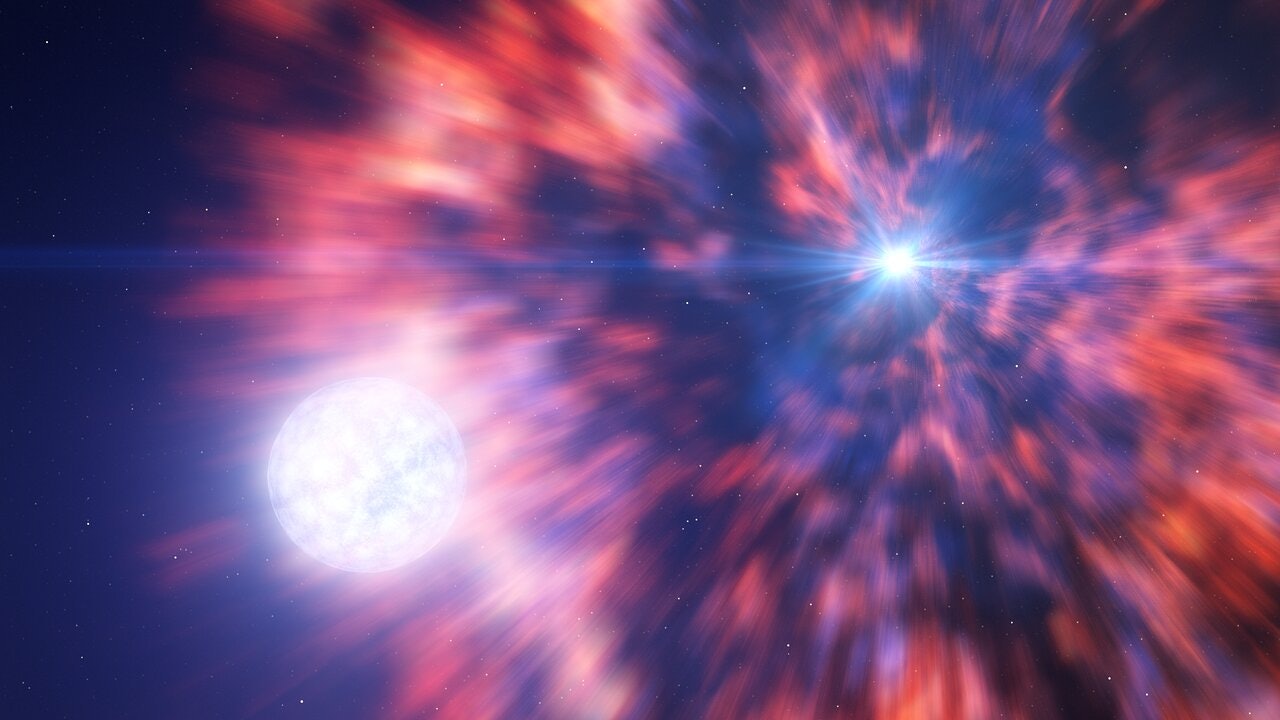
When a star goes supernova, things can get messy. As the celestial object reaches the end of its life, the explosion, a supernova, spews light and energy across the universe and disrupts the gentle balance that once existed in the star system. The end result is either a neutron star or a black hole: two types of dense objects that used to be the core of a massive star. But astronomers are still piecing together exactly what happens in the immediate aftermath of a supernova. And, in a pair of new studies out recently, two teams of astronomers report something novel to science: A dead star acting like its alive.

A strange flickering
Last year, a team of researchers led by astrophysicist Thomas Moore at Queen’s University Belfast observed something strange happening in the wake of a supernova in galaxy NGC 157. The bright light from the explosion was fading, as usual, but strangely, it also seemed to be flashing at regular intervals as it dimmed. They published their findings in The Astrophysical Journal in October 2023.
At the same time that Moore and his colleagues noticed this bizarre flashing, another team of researchers, led by astrophysicist Ping Chen at the Weizmann Institute of Science in Israel used infrared telescopes to measure how hydrogen gas was flowing in and around the center supernova explosion. They found that bursts of movement of the hydrogen gas coincided with the flashing bursts of light — and with powerful bursts of gamma rays.
The best explanation, according to Chen, is that the neutron star or black hole at the heart of the supernova is part of a binary pair of stars orbiting a shared center of gravity. The bright flashes of light Moore and his team saw, along with the gamma-ray bursts Chen and his team saw, could both be caused by hydrogen gas falling onto the extremely dense remains of the dead star.
Chen’s team published their finding this week in the journal Nature.
The most massive stars in the universe often come in pairs, orbiting a shared center of gravity like partners in a cosmic waltz; picture the twin suns of Tatooine in Star Wars. Massive stars are also prone to horrible, explosive deaths. And when that happens, it’s rare for the other partner to stick around.
“In most cases, the supernova explosion would disrupt the binary system,” Ping Chen, an astrophysicist at the Weizmann Institute of Science and co-author of the second paper tells Inverse. “Disrupt the binary system” is an astronomer's polite way of saying that when the exploding star blasts most of its mass out into space, the remaining, much smaller core won’t have enough gravity to hold onto its companion, and the companion star is likely to get flung out into space.
In this case, though, one astrophysical model suggests a supernova could “produce a newly born neutron star with a kick toward the companion,” Moore tells Inverse. In other words, when the neutron star or black hole formed, the explosion of the supernova would have nudged it into a perilously close orbit around its surviving companion star — and now it’s snatching away bits of gas from the companion star’s outer layers with every pass. Essentially, the dead star is stealing back bits of its own shed skin (and eating them).
Is it alive?
Most massive stars’ cores collapse into neutron stars (densely-packed balls of neutrons) when they run out of nuclear fuel, but the largest keep collapsing under their own tremendous gravity and become black holes.
Chen, Moore, and their colleagues can’t actually see the dead star’s core – which means they can’t tell whether it’s a black hole or a neutron star – because it’s hidden by the light of its companion and the glowing gas cloud blasted out by the supernova. That means we may never know exactly what lurks in the heart of the supernova.
But there’s hope for solving the next supernova mystery that turns up. Future telescopes may be able to give astronomers a better look at the flow of hydrogen during these events. That, in turn, could reveal how massive the dead stellar core is — and that’s the key to discovering its identity, whether black hole or neutron star.
Meanwhile, astronomers are interested in figuring out the eventual fate of the two stars in the center of the slowly spreading cloud of gas after the supernova in NCG 157.
“We suggest that the gradual inspiral of the neutron star into the companion may be the formation path to a Thorne-Zytkow object,” says Moore. A Thorne-Zytkow object is what happens when a neutron star collides with a massive star such as a red giant, and if Moore and his colleagues are right, that should be extremely interesting to watch. But time, and more data, will tell.







